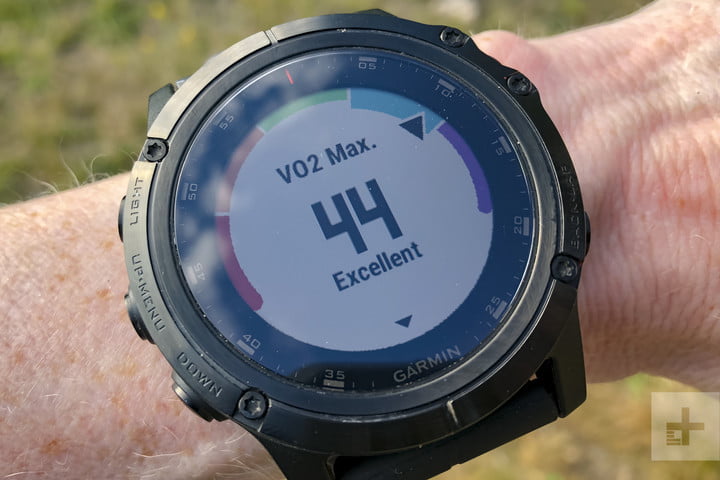Today’s wearables are already stuffed to the gills with all kinds of health sensors, from electrocardiograms to sleep trackers. The most recent addition is the pulse oximeter, and it’s starting to show up in the latest, most high-end smartwatches and fitness trackers. But what is it, and should your next device have one?
Pulse oximeters measure blood oxygen level — how much oxygen is present in your blood and how well it is transported to the extremities (blood pressure monitors are different). Medical pulse oximeters are simple, non-invasive gauges that often clip on to an extremity, like a finger, toe, or earlobe, to take measurements based on a combination of LED red and infrared light. These measure the varying rates of light absorption to determine the level of oxygen in the blood.
For wrist-based wearables, an on-screen widget shows a blood oxygen percentage alongside altitude readings to calculate the levels of oxygen in the blood. This can be useful for hiking, alpine sports, and other elevation-related activities. Another use for the “pulse ox” reading is diagnosing sleep apnea, a common sleep disorder in which blood oxygen levels drop during sleep.
In smartwatches and fitness trackers, pulse oximeters are often referred to as SpO2 sensors. Not all pulse oximeters work the same way, and it’s hard for most medical civilians to judge whether its findings are significant or accurate. Some have you place a finger on the back of the device for measuring, while others can sit happily on your wrist as you hold completely still for that check. Not all fitness wearables have them, but they are becoming more popular as another feature to look for when considering a purchase.
Trackers that measure blood oxygen

SpO2 sensors are starting to appear in the high end of mainstream products. Garmin, for example, packs this feature into its Garmin Vivosmart 4, the Garmin Venu, Fenix 5X and 6X, and Forerunner running watches. Fitbit and Withings are also featuring SpO2 sensors on a host of devices. Fitbit’s Ionic, Versa, and Charge 3 devices include a light-based SpO2 sensor paired with its branded fitness app.
It may be early days for these features, at least on some products. A Digital Trends review of the Fenix 5X Plus made this observation:
… the Fenix 5X Plus ships with a pulse oximetry sensor that will measure blood oxygen saturation (SpO2) levels. For most people, this sensor won’t provide any meaningful data, but alpinists who are climbing at high elevations can use this measurement to gauge their altitude acclimation … The Pulse Ox sensor shows promise but it has one major flaw — you need to be still. Very still. So still that it is difficult to get a reliable reading, and we ended up never using the feature.

The Withings brand has committed to the pulse oximeter tech with the Withings Pulse Ox and its latest ScanWatch, which it demoed at CES 2020. The ScanWatch specializes in sleep apnea detection and will track oxygen saturation levels through the night as the wearer sleeps. The device, like other similar ones, has not been cleared by the FDA yet, though approval is expected this year.
The Garmin Vivosmart 4 can log blood oxygen levels during sleep while recording the results in your sleep data. However, the device does not specifically alert you to sleep apnea, and you must analyze the data yourself.
Should you consider this feature?
If you are a hiker or aviator, engage in high-altitude sports, or suffer from sleep apnea, you may benefit from a watch or tracker with a built-in SpO2 sensor. Note that some devices turn this feature off by default because of the negative impact on battery life. The primary function of a pulse oximeter is to gather health data and notify you of any unusual readings. A normal blood oxygen saturation rate is around 95% with slight variations. Readings that come in consistently below 90% may prompt you to get a checkup, at the very least to verify the accuracy of the readings and to figure out an approach to mitigate any problem the device may have uncovered.
SpO2 and the Apple Watch Series 6
Rumor has it that one of the new health features debuting for the upcoming Apple Watch Series 6 could be SpO2 tracking. 9to5Mac pointed out iOS 14 code that reveals that a new Apple Watch could detect blood oxygen levels and alert users if it detects levels falling below a certain point. Apple reportedly has made a deal with Taiwan-based ASE Technology to bring biosensors to the Apple Watch that facilitate SpO2 tracking.



